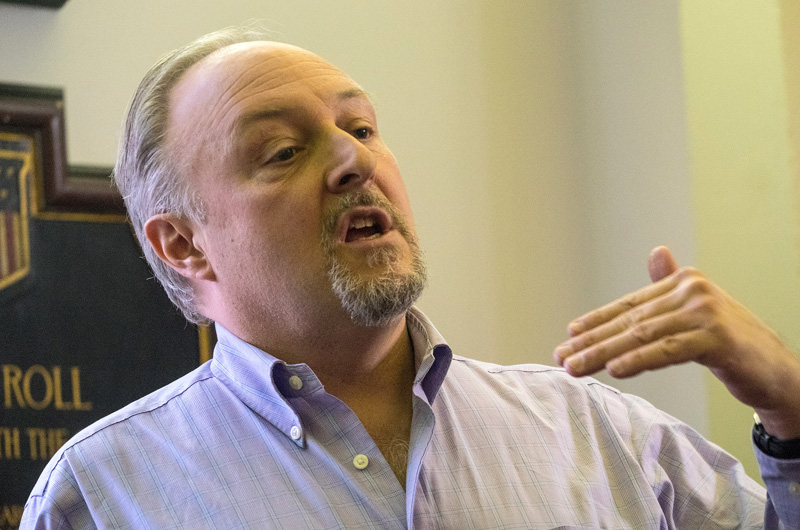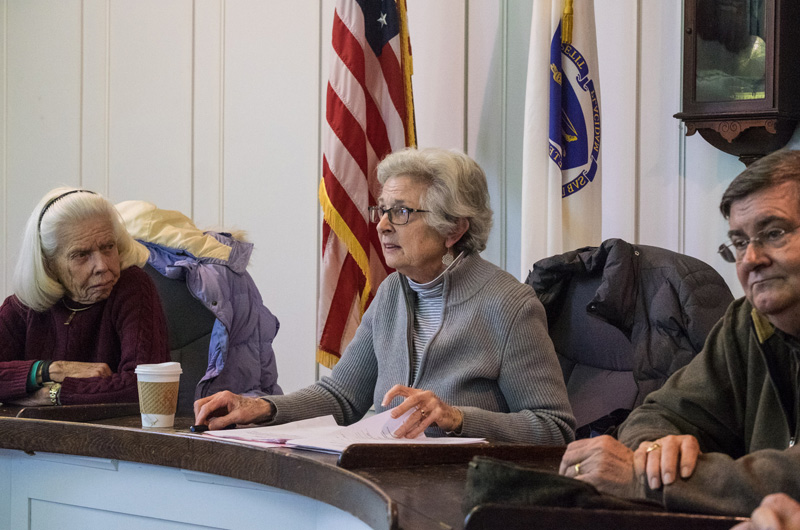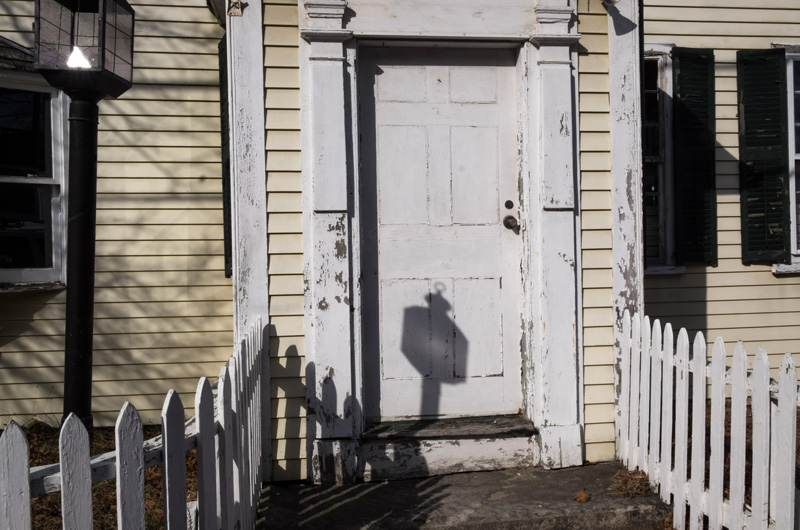Edgartown took another step toward possible ownership of a dilapidated private property on Main street Thursday, with the community preservation committee voting to recommend spending $1.5 million to purchase the so-called Yellow House.
The proposal now goes on the warrant for the April annual town meeting. A separate article will ask the town to spend $1.5 million to buy the private parking lot next door. That money would not come from community preservation funds.
The clapboard and wood shingle two-story building at 66 Main street, in the heart of downtown, is owned by the Hall family, and has been the source of long-running legal battles and discussion among town boards.
During a 30-minute public hearing Thursday hosted by the CPC, Benjamin Hall Jr., representing the family, questioned the project’s legitimacy and claimed the town has blocked renovation efforts.
“I would urge the town that this is not a wise choice,” he said.
But CPC members were resolute. “I think we’ve given the Halls adequate opportunity to do whatever they want to do and they haven’t done it,” board member Alan Wilson said. “It’s time we took some action.” The board voted unanimously in favor of the proposal.
The town will have the option of either purchasing the property or taking it by eminent domain.
If the articles are approved, preliminary plans call for renovating the Yellow House and leasing it as rental space, turning the land between the house and the Edgartown town hall into a small park, and converting the private parking lot into a municipal lot.
For more than a decade the house has been at the center of legal skirmishes between the town and the Hall family, including a long-running superior court case over around an old linden tree outside the property, which the Halls wanted to remove. The case was eventually dismissed and the tree stayed.
On another front, the town voted in 2013 to approve a bylaw amendment requiring minimum maintenance on buildings in the town historic district. Shortly after the bylaw went into effect the town sent a violation letter to the Halls for the Yellow House, and after no work was done the commission later voted to send the matter to the building department for enforcement. Town counsel Ronald H. Rappaport said Thursday that the town brought a lawsuit in 2015 to compel the Hall family to comply with the order; that case has not yet been heard.
Three years ago the community preservation committee voted to spend $1.4 million to buy the house, but the matter was later postponed.
On Thursday, town administrator Pamela Dolby said the home is one of the oldest buildings on Main street. While assessor records state the building was built in 1850, the town has said research indicates the first part of the building was built in 1805 by Capt. Chase Pease, the county jailer and an early Methodist. More recently, it was the home of Bickerton & Ripley bookstore, which closed in the early 2000s.
At the hearing, with the two-story house visible out the meeting room window, Mr. Hall said he had a different take on the situation, and claimed that what was presented by the board was “what has recently become known as alternate facts as to what exactly has transpired at that property.”
He said his family had been trying to renovate the building since 2003 and had been stymied by the town, which he said was trying to deplete the value of the property and make it difficult to move forward. Parties that have expressed interest in the property have been deterred by issues with the town, he said. “We have been working to try to get people interested in doing a project there that would be worthy of the town, and not something that would be inappropriate, something that would be of long term benefit to the town,” Mr. Hall said.
He also questioned the town’s valuation of the property, suggesting that it is worth at least $7 million, and will cost even more to restore.
He raised procedural questions, including whether a vote was taken by the selectmen to recommend the project. Mrs. Dolby said no vote was required.
Some in the room had questions for Mr. Hall. “I want to ask Ben, why haven’t you maintained the standards of the town with the building,” Linda DeWitt said. “I would really like to know. That is an embarrassment . . . when I give people a tour, I have to explain. Why not maintain it through all these years?”








Comments (12)
Comments
Comment policy »